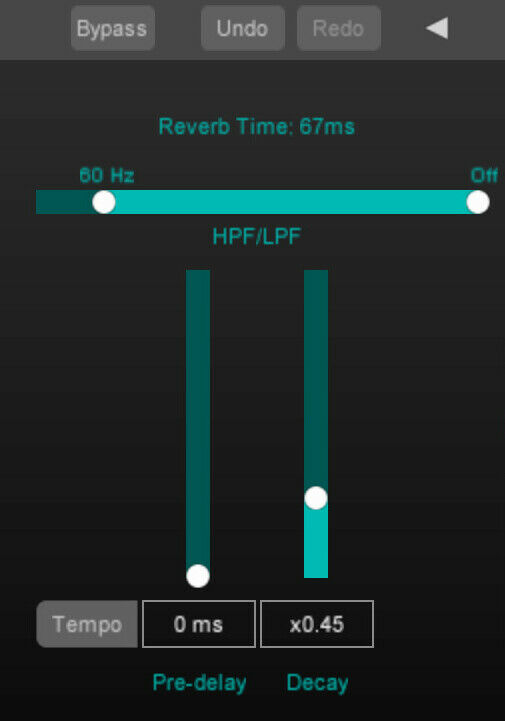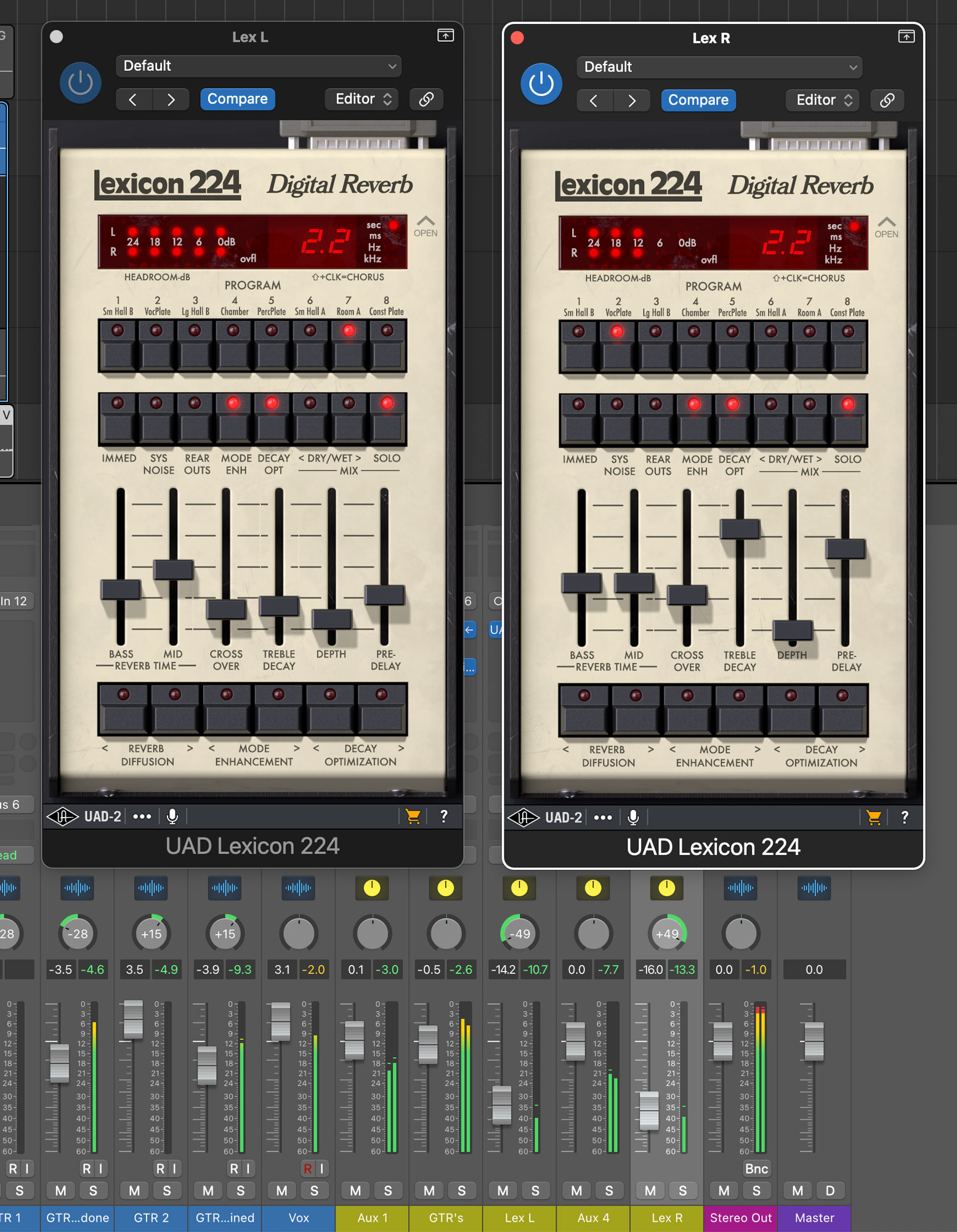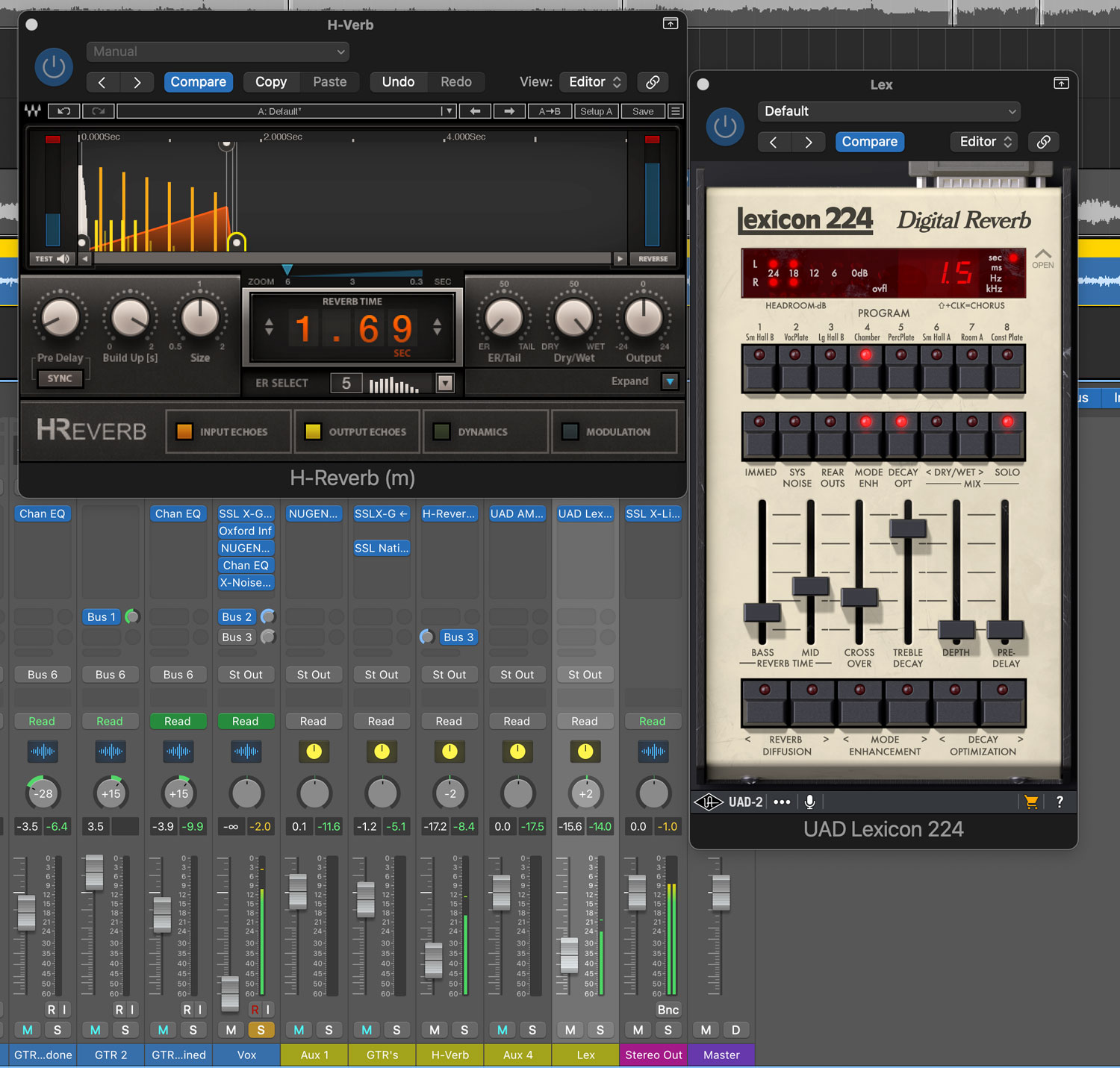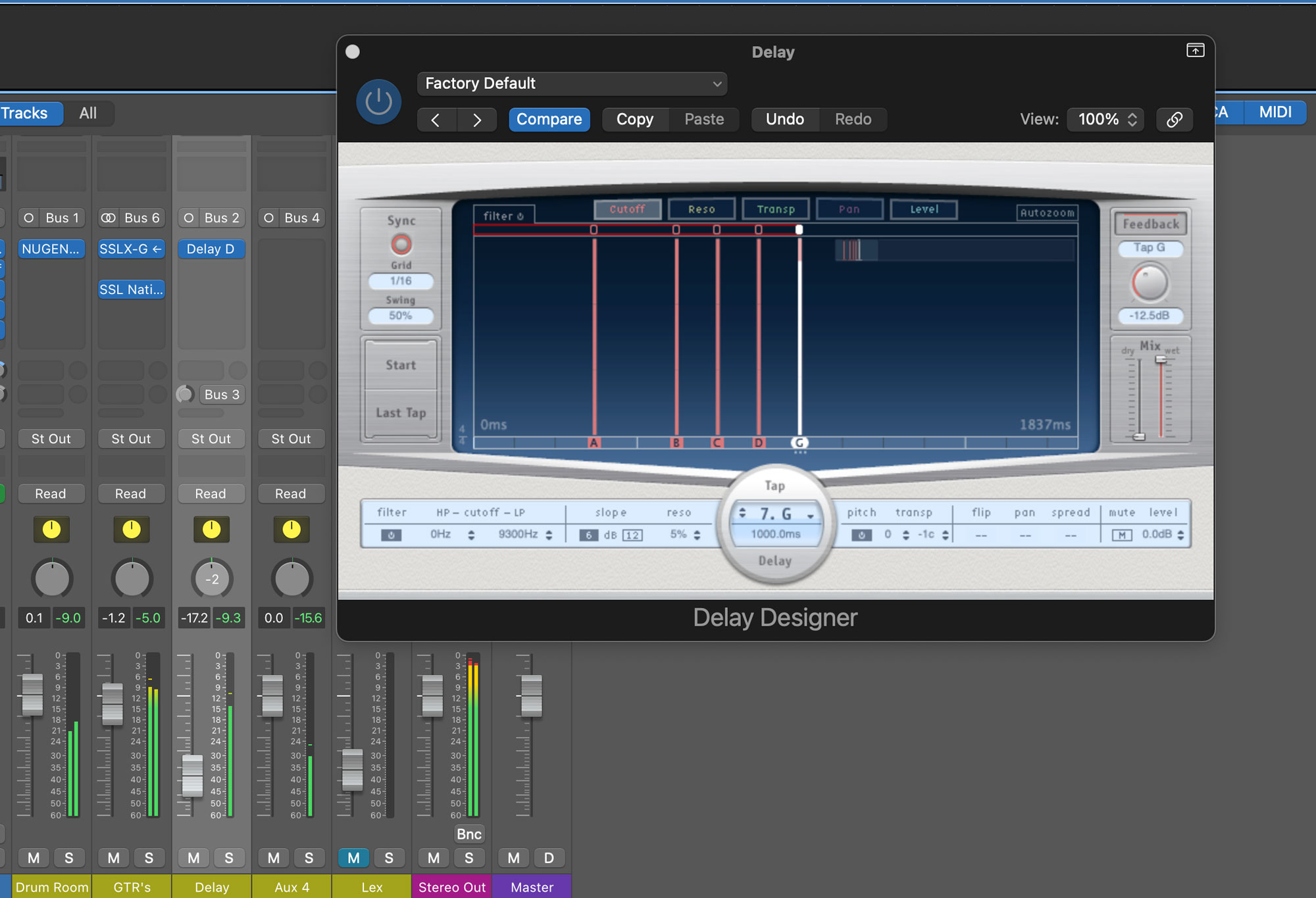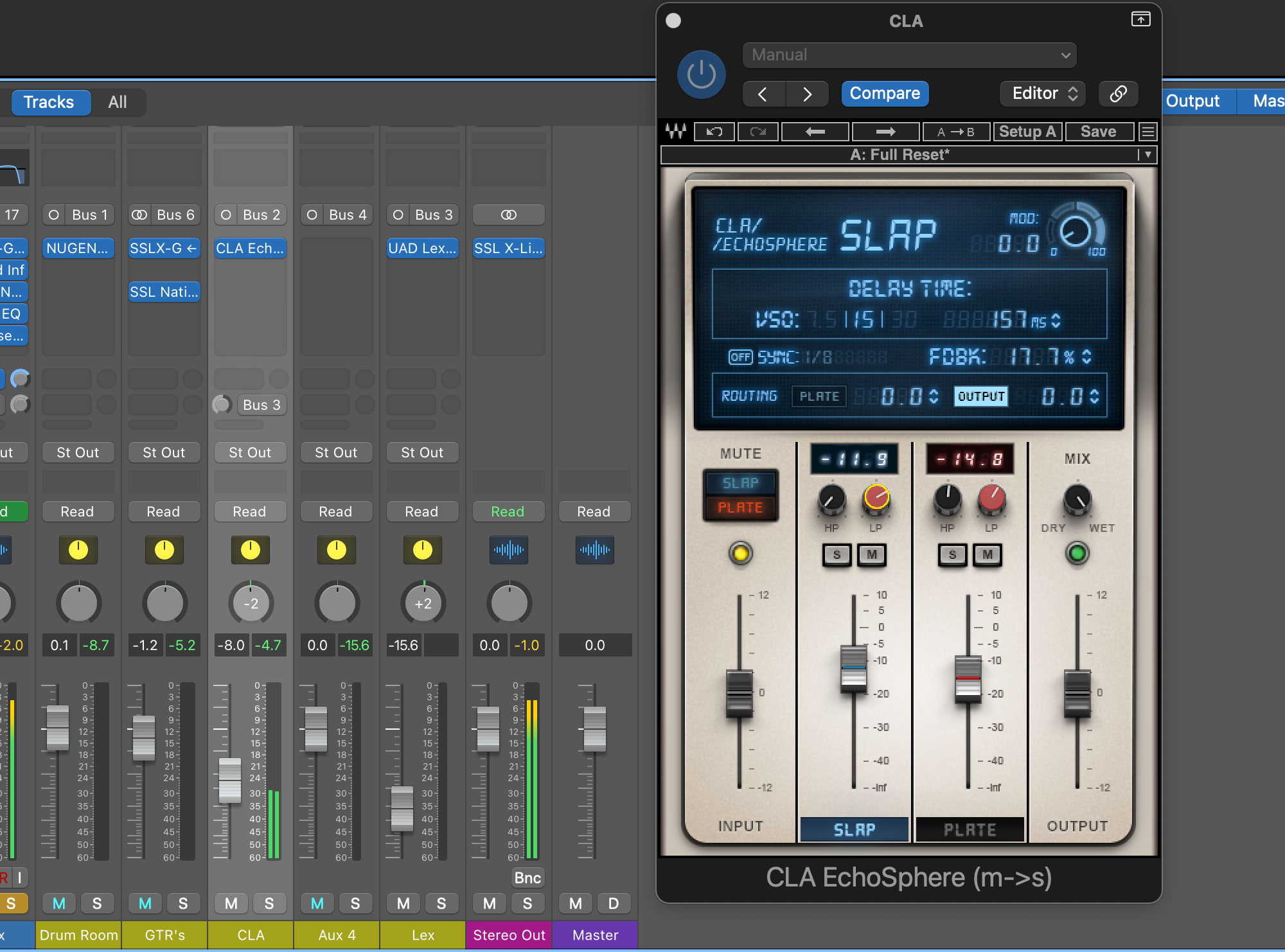EQ'ing your Reverb
An established technique you can try, which is often referred to as the 'Abbey Road' reverb trick, is to narrow the frequency range of your reverb with high and low pass filters.
It's a trick that live sound engineers have been using for some time as it helps to control a reverb and keep it focused within and behind the vocal range rather than letting acoustic conditions of the environment or reverb type take over.
The same is true for recording where you're looking for a big stadium-style rock sound but still want every word to be in the listener's face.
You also have the flexibility to 'clean up' midrange frequencies which could make your reverb adversely sit up depending on the type of reverb used.
Halls and chambers tend to have issues in the lower mid frequencies, while room and plate reverb issues tend to be more in the mid to high frequencies. Just remember this trick works on many different instruments as well as vocals.
Adding effects to your reverb
There are two ways to do this:
You could set up a duplicate vocal channel and add effects like compression, saturation or modulation directly to the channel, then buss it to your reverb.
Or, you can set up a reverb buss and add the additional effects, compression being the most common, then send it the original vocal.
You will be surprised at how effective a messed up reverb can be when all the time you've been focusing on which type of plate to use, Abbey Road or EMT 140!
Again there are no set patterns, no rules, and essentially no limits to the amount of messing about you can do. In many ways, this is how particular mix engineers achieve that "secret sauce" that elevates a mix from great to outstanding. These are often the little secrets that define their sound and often the little tricks they are less likely to divulge!
Side-chain processing
Side-chain processing can be a very powerful tool when applying reverb to vocals.
For example, you could take the original uncompressed vocal take and use it to compress or even duck a buss reverb, giving it the illusion of the original dynamic performance. Or perhaps you could consider a pitch-shifted parallel vocal track used solely to generate the reverb.
Again the only thing that limits your creativity here is you. The majority of DAW stock plugins now have side-chain options, so there's no limit to the number of experimental possibilities.
Consider Delay Instead of Reverb
Sometimes just a little delay is all you need to create a sense of size and space while keeping the vocal very much forward and focused.
Slapback delay is a great example. It was first heard on early rock'n'roll and rockabilly records, and was originally thought to be the result of two tape machines recording the same take and then being played back slightly out of sync.
The effect is still in use today and works well in conjunction with other effects, such as modulation, pitch shifting, and saturation, to name a few.
Slapback (with or without additional effects) is perfect for creating a double-tracked vocal effect. Adding the latter will also help to fatten up an original vocal track.
You can't beat a liberal use of echo and delay when it comes to big vocal sounds and harmony parts. There's a wealth of plugins available now for emulating all manner of echos from tape echo to analogue and digital delay units.
Nearly every DAW has plugins for various types of delay but for that authentic vintage vibe, check out Universal Audios or Waves' excellent range of vintage-inspired plugins.
